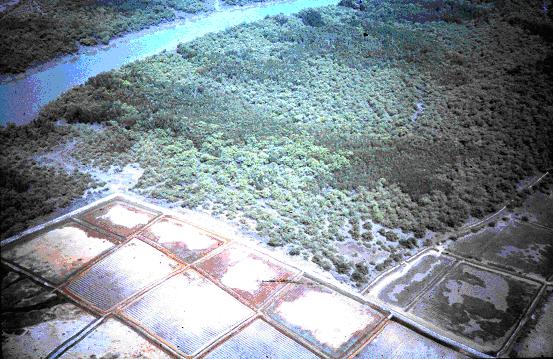|
Schwertmannite
Schwertmannite is an iron-oxyhydroxysulfate mineral with an ideal chemical formula of or . It is an opaque tetragonal mineral typically occurring as brownish yellow encrustations. It has a Mohs hardness of 2.5 - 3.5 and a specific gravity of 3.77 - 3.99. It was first described for an occurrence in Finland in 1994 and named for Udo Schwertmann (born 1927) soil scientist, Technical University of Munich, Munich, Germany. Schwertmannite (with a distinct "pin cushion" morphology) commonly forms in iron-rich, acid sulfate waters in the pH-range of 2 - 4. The mineral was first recognised officially as a new mineral from a natural acid-sulfate spring occurrence at Pyhäsalmi, Finland. However, it is more commonly reported as an orange precipitate in streams and lakes affected by acid mine drainage. Schwertmannite is also known to be central to iron-sulfur geochemistry in acid sulfate soil Acid sulfate soils are naturally occurring soils, sediments or organic substrates (e.g. peat) tha ... [...More Info...] [...Related Items...] OR: [Wikipedia] [Google] [Baidu] |
Acid Sulfate Soil
Acid sulfate soils are naturally occurring soils, sediments or organic substrates (e.g. peat) that are formed under waterlogged conditions. These soils contain iron sulfide minerals (predominantly as the mineral pyrite) and/or their oxidation products. In an undisturbed state below the water table, acid sulfate soils are benign. However, if the soils are drained, excavated or otherwise exposed to air, the sulfides react with oxygen to form sulfuric acid.Identification & Investigation of Acid Sulfate Soils (2006), Department of Environment, Western Australia. Retrieved froportal Release of this sulfuric acid from the soil can in turn release iron, aluminium, and other heavy metals and metalloids (particularly arsenic) within the soil. Once mobilized in this way, the acid and metals can create a variety of adverse impacts: killing vegetation, seeping into and acidifying groundwaterMosley LM, Palmer D, Leyden E, Fitzpatrick R, and Shand P (2014). Changes in acidity and metal g ... [...More Info...] [...Related Items...] OR: [Wikipedia] [Google] [Baidu] |
Sulfate Minerals
The sulfate minerals are a class of minerals that include the sulfate ion () within their structure. The sulfate minerals occur commonly in primary evaporite depositional environments, as gangue minerals in hydrothermal Vein (geology), veins and as secondary minerals in the Redox, oxidizing zone of sulfide mineral deposits. The Chromate ion, chromate and manganate minerals have a similar structure and are often included with the sulfates in mineral classification systems.Klein, Cornelis and Cornelius S. Hurlbut, 1985, ''Manual of Mineralogy,'' 20th ed., John Wiley and Sons, New York, pp. 347–354 . Sulfate minerals include: *Anhydrous sulfates **Barite BaSO4 **Celestite SrSO4 **Anglesite PbSO4 **Anhydrite CaSO4 **Hanksite Na22K(SO4)9(CO3)2Cl *Hydroxide and hydrous sulfates **Gypsum CaSO4·2H2O **Chalcanthite CuSO4·5H2O **Kieserite MgSO4·H2O **Starkeyite MgSO4·4H2O **Hexahydrite MgSO4·6H2O **Epsomite MgSO4·7H2O **Meridianiite MgSO4·11H2O **Melanterite FeSO4·7H2O **Antlerite ... [...More Info...] [...Related Items...] OR: [Wikipedia] [Google] [Baidu] |
Specific Gravity
Relative density, or specific gravity, is the ratio of the density (mass of a unit volume) of a substance to the density of a given reference material. Specific gravity for liquids is nearly always measured with respect to water (molecule), water at its densest (at ); for gases, the reference is air at room temperature (). The term "relative density" (often abbreviated r.d. or RD) is often preferred in scientific usage, whereas the term "specific gravity" is deprecation, deprecated. If a substance's relative density is less than 1 then it is less dense than the reference; if greater than 1 then it is denser than the reference. If the relative density is exactly 1 then the densities are equal; that is, equal volumes of the two substances have the same mass. If the reference material is water, then a substance with a relative density (or specific gravity) less than 1 will float in water. For example, an ice cube, with a relative density of about 0.91, will float. A substance wi ... [...More Info...] [...Related Items...] OR: [Wikipedia] [Google] [Baidu] |


